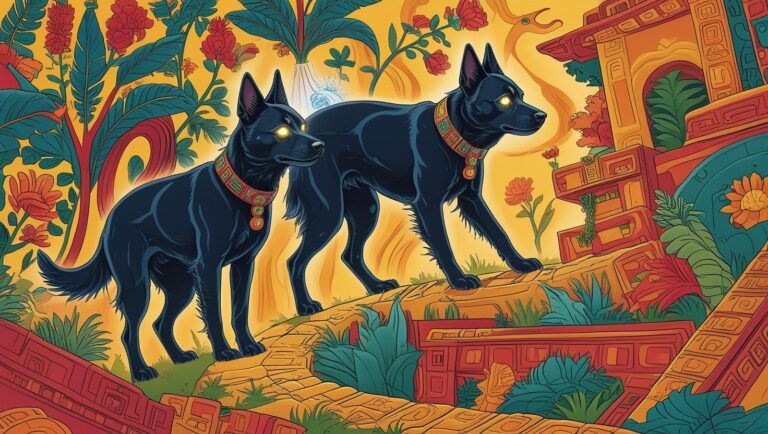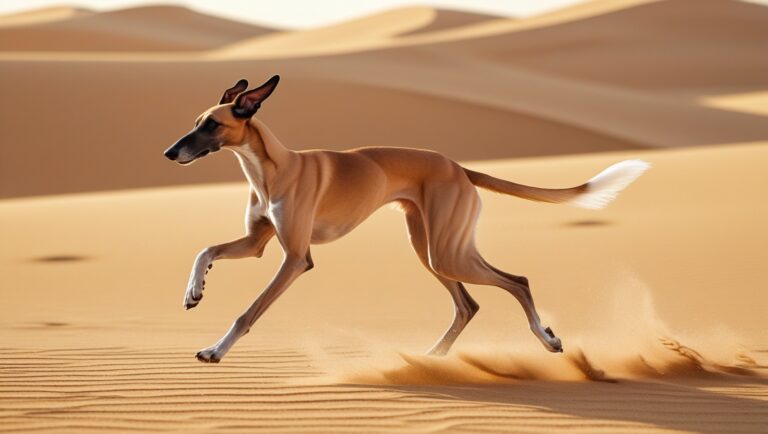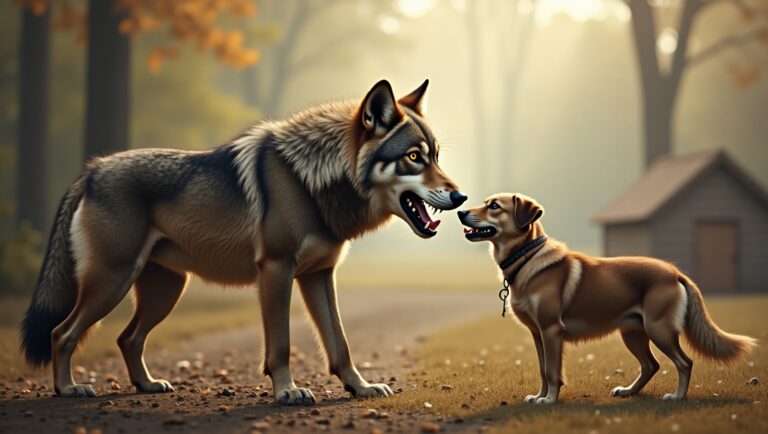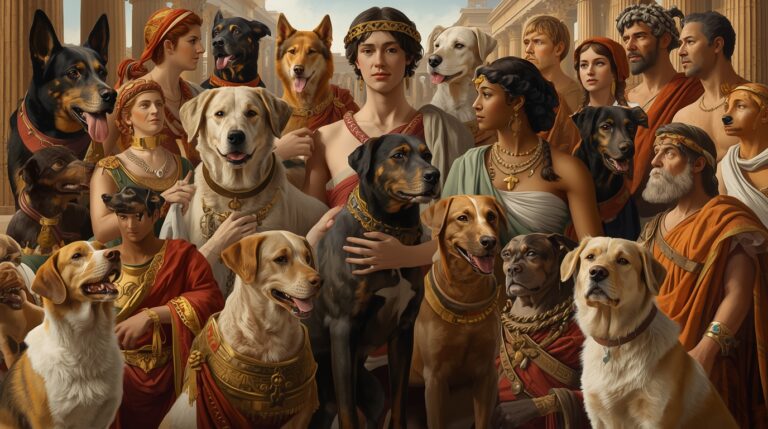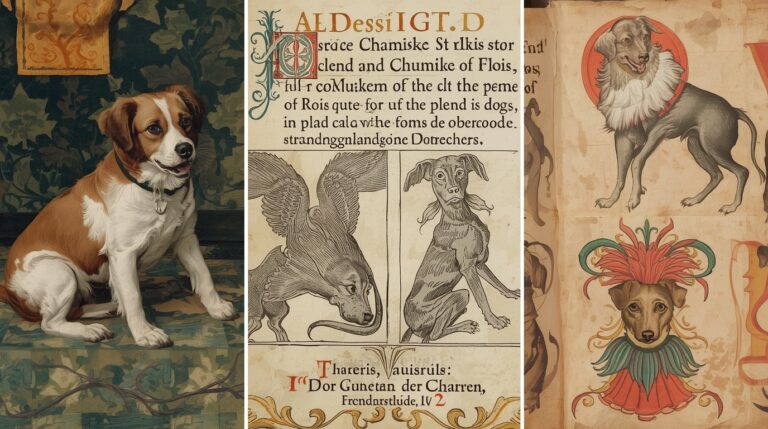Dogs of Historical Figures (Napoleon, Churchill, Queen Victoria)
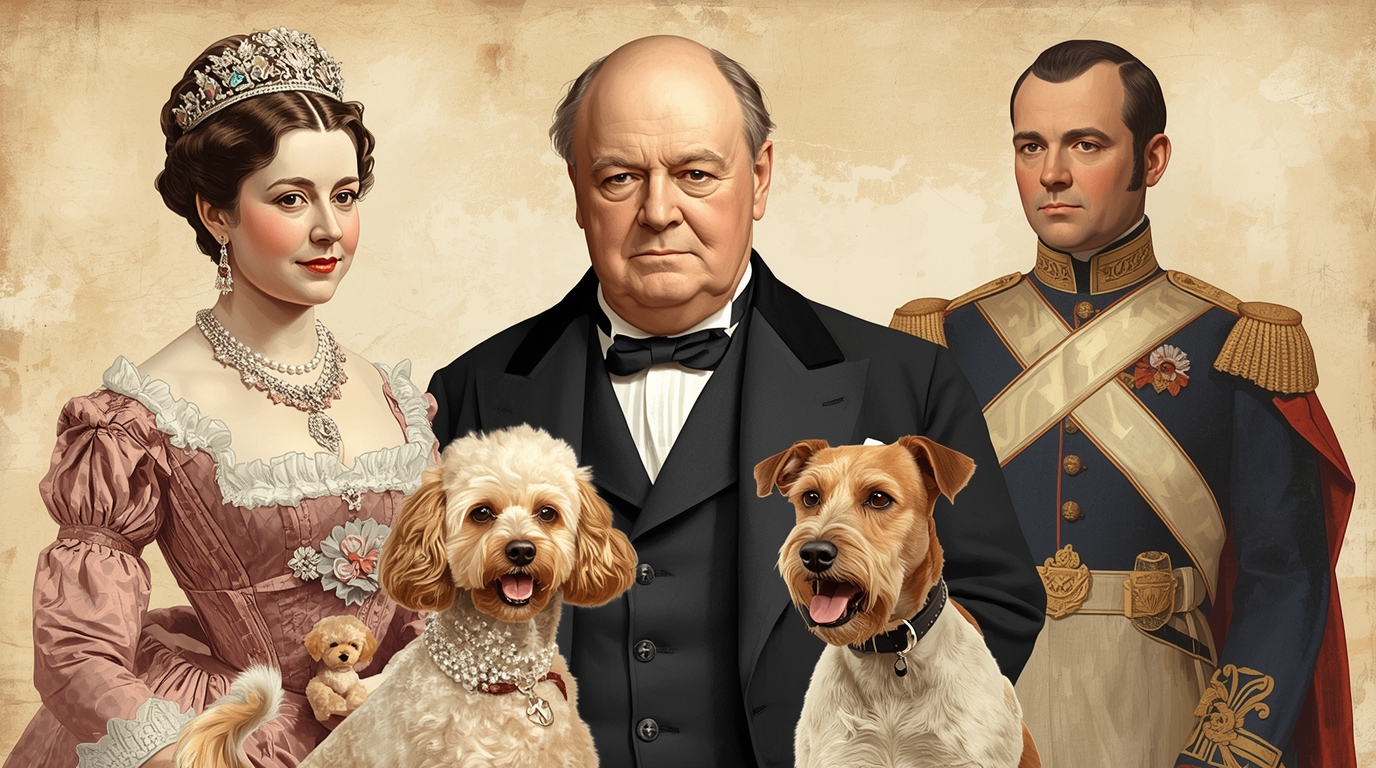
Introduction
Behind every great leader, there is often a quiet companion offering loyalty without question—sometimes that companion walks on four legs. For centuries, dogs have been more than just pets to historical figures. They have been confidants, symbols of power, emotional supports during wartime, and silent witnesses to world-changing decisions. This article explores the intimate relationships between three iconic leaders—Napoleon Bonaparte, Winston Churchill, and Queen Victoria—and their beloved dogs. In understanding their connections with canines, we also gain insight into their personalities, vulnerabilities, and leadership styles.
Napoleon Bonaparte and Fortune
Among the most powerful military strategists in history, Napoleon Bonaparte had a surprising emotional attachment to a small black and white terrier named Fortune. The dog originally belonged to Josephine de Beauharnais, Napoleon’s first wife. But Fortune soon captured the affection of the ambitious general himself, earning a place not just in their household but in the chronicles of European history.
Fortune was fiercely loyal to Josephine and reportedly jealous of anyone who competed for her attention—including Napoleon. According to popular accounts, on the couple’s wedding night, Fortune bit Napoleon on the leg when he attempted to enter the bedroom. Despite this rocky start, Napoleon came to respect the terrier’s devotion, and he allowed Fortune to sleep in Josephine’s bed throughout their marriage.
The Symbolism of Fortune in Napoleon’s Life
Fortune may have been a small dog, but he represented major emotional stability in Napoleon’s otherwise volatile life. At the height of Napoleon’s military campaigns, when death and betrayal were commonplace, Fortune remained a constant presence in his private quarters. The terrier accompanied Josephine to the Tuileries Palace, serving as a symbol of personal life amid political chaos.
Napoleon’s tolerance for the dog—especially one that had once attacked him—highlighted his respect for loyalty, a trait he demanded from his generals and ministers. Historians have even speculated that Napoleon’s affection for Fortune served as a subtle public-relations tactic, humanizing the emperor in the eyes of the public and the court.
Queen Victoria and Dash: A Royal Affection
Queen Victoria, who reigned from 1837 to 1901, had a lifelong affection for dogs that began in her youth. Her first and most beloved companion was Dash, a Cavalier King Charles Spaniel, gifted to her in 1833 when she was just 14 years old. Dash became her most constant friend during the politically tense years before her ascension to the throne.
Dash was no mere accessory. He traveled with Victoria in her carriage, shared her leisure time, and accompanied her on holidays. The queen even personally bathed him after walks. When she became queen at the age of 18, Dash was reportedly waiting for her return from the coronation, excited as ever. This devotion resonated deeply with Victoria, who valued loyalty above all.
The Queen’s Lifelong Love for Dogs
After Dash’s death in 1840, Queen Victoria’s love for dogs intensified rather than faded. She expanded the Royal Kennels and adopted several breeds, including Skye Terriers, Collies, and Pomeranians. On a trip to Italy in 1888, she famously brought back Marco, a Pomeranian who became the progenitor of the breed’s popularity in England.
Her devotion extended to breeding programs at Windsor Castle, where she maintained detailed records of each dog’s lineage and health. These dogs were not only companions but also representatives of her vision of the monarchy—disciplined, elegant, and devoted.
Dogs in the Victorian Court
Dogs became an integral part of court life during Victoria’s reign. Blenheim Spaniels, like Dash, were a status symbol, often featured in royal paintings. Etiquette manuals from the period described how pets should be cared for, groomed, and presented in elite social settings. Dogs served as living symbols of emotional intelligence and cultural refinement.
Royal dog portraits were commissioned alongside those of human family members. These works were not sentimental indulgences—they were meant to convey loyalty, moral virtue, and royal benevolence, traits the crown was eager to project during a century of political transformation.
Winston Churchill and Rufus the Poodle
Winston Churchill, Britain’s Prime Minister during the Second World War, is often associated with bulldogs due to their shared image of stubborn tenacity. But in his personal life, Churchill’s most beloved dog was not a bulldog—it was a miniature brown poodle named Rufus. The contrast between the public image and the private choice reveals a more nuanced side of the leader.
Rufus was Churchill’s near-constant companion during the war years. He accompanied the Prime Minister on official trips, sat beside him during strategy sessions, and often dined at his side. When Churchill attended Cabinet meetings or traveled by train, Rufus was almost always in tow, observing the decisions that shaped global history.
Rufus and Wartime Leadership
During the darkest days of WWII, Churchill found solace in Rufus. As the Prime Minister faced the Blitz, military setbacks, and the burden of leading a nation under siege, Rufus offered a rare moment of peace. Photographs show the dog sitting calmly at Churchill’s feet, sometimes even on the same chair, as if sharing the weight of leadership.
Rufus was more than a mascot—he was a silent support system. In moments when Churchill might have felt the crushing solitude of command, Rufus was there to provide non-judgmental companionship and emotional relief. This relationship offers insight into Churchill’s emotional complexity, often masked by his formidable rhetoric.
Churchill’s Humor and Quotes About Rufus
Churchill’s wit extended to his observations about dogs. He famously said: “The more I see of men, the more I like dogs.” Regarding Rufus, one of his favorite jokes was that the dog had “decided views on foreign policy.” He often spoke to Rufus as if he were a colleague, once telling a steward on a train, “No, no, Rufus can’t watch me eat. He gets too excited.”
These light-hearted moments humanized Churchill for the British public and staff who were otherwise accustomed to his steely presence. Rufus offered a way for Churchill to be vulnerable without compromising authority.
The Second Rufus: A Successor After Grief
When the first Rufus was tragically killed by a car in 1947, Churchill was devastated. He mourned deeply and delayed replacing him. Eventually, a new poodle was gifted to him—named Rufus II. Churchill accepted the new companion but insisted that “There will never be a dog like the first Rufus.”
Rufus II accompanied Churchill in his final years in public office and later retirement. While the emotional bond may never have matched the original, the tradition of canine companionship remained vital to Churchill’s well-being and identity.
Other Royal and Political Dog Lovers
Napoleon, Victoria, and Churchill were not alone in their affection for dogs. Tsar Nicholas II of Russia had a beloved French Bulldog named Ortino, who remained by the family’s side until their execution in 1918. Franklin D. Roosevelt, Churchill’s wartime ally, famously had Fala, a Scottish Terrier who traveled with him and became part of FDR’s public image.
These dogs often became symbols of the human side of leadership, reminding constituents that even the most powerful figures craved loyalty, affection, and comfort.
Dogs as Reflections of Power and Persona
The breeds chosen by these leaders often reflected their personalities. Napoleon’s small terrier, Fortune, was scrappy and loyal, like the self-made general. Queen Victoria’s Spaniels and Pomeranians were symbols of refinement, mirroring her role as a cultural matriarch. Churchill’s poodle, intelligent and reserved, paralleled his complex blend of brilliance and introspection.
In many ways, these dogs functioned as extensions of their owner’s character, offering clues into the private lives of otherwise inscrutable leaders.
Emotional Benefits of Dogs for Historical Leaders
Living under the microscope of public scrutiny is emotionally taxing. Dogs offered these historical figures a form of emotional insulation—a private refuge of love in a world of politics, diplomacy, and war. The nonverbal bond between humans and dogs has been shown to reduce stress, increase oxytocin levels, and improve psychological resilience.
For leaders like Churchill, whose moods oscillated between confidence and depression, dogs were not just companions—they were emotional lifelines.
Dogs in Royal Portraiture and Propaganda
Royal and political portraits often featured dogs to communicate power, gentleness, or divine favor. Queen Victoria posed with Dash and other dogs in several official paintings. Churchill was often photographed with Rufus in candid moments, softening his wartime image. Napoleon commissioned very few paintings with Fortune, but private sketches reveal the dog nestled at Josephine’s feet.
In visual propaganda, dogs were not merely decorative—they were symbols of trustworthiness, loyalty, and control.
Dog Graves and Memorials
Queen Victoria buried Dash at Windsor Palace with a tombstone that reads, “Here lies Dash, the favorite spaniel of Her Majesty Queen Victoria.” The grave is still visited today. Churchill honored Rufus with private remembrances, while Josephine reportedly commissioned a memorial for Fortune after his passing.
These tributes reflect the depth of love and emotional impact these dogs had on their influential owners. They were not just pets—they were mourned like family.
Canine Influence on Historical Decision-Making
There’s no record of dogs influencing major decisions, but their presence during pivotal moments is well documented. Rufus was present during wartime Cabinet meetings. Dash accompanied Victoria during crucial letters and early government briefings. Fortune stayed by Josephine’s side during Napoleon’s self-coronation.
In these subtle ways, dogs were part of the historical process, silent observers during history’s turning points.
also read this Famous Historical Dogs
From Pets to Political Icons
Over time, these dogs became symbols in their own right. Dash is featured in biographies of Queen Victoria. Rufus has his own entries in Churchillian literature. Fortune appears in films and historical fiction about Napoleon. The dogs have become more than companions—they are part of the narrative structure used to humanize the legends.
Their names now appear in museums, history books, documentaries, and children’s stories, passing their legacy to future generations.
Comparing Napoleon, Churchill, and Victoria’s Dog Relationships
Each figure’s relationship with their dog was unique. Napoleon admired Fortune’s protective loyalty. Victoria found early emotional stability in Dash and later elevated dogs as symbols of grace. Churchill used Rufus as an emotional buffer and symbol of private vulnerability. These differences mirror their public personas, leadership styles, and personal philosophies.
Yet they all shared a common truth: even the most powerful among us need unconditional love.
How These Dogs Are Remembered Today
Today, statues, grave markers, books, and exhibitions ensure these dogs are not forgotten. Dash’s grave is maintained at Windsor. Rufus appears in Churchillian biographies and exhibitions at Chartwell House. Fortune is part of Napoleon’s lore at Malmaison, Josephine’s estate. Documentaries and podcasts increasingly include these animals in broader narratives of historical empathy.
The dogs may not have issued royal decrees or led armies, but they provided silent, steadfast support in a world of chaos.
Conclusion
In times of war, political upheaval, or societal transformation, the unwavering loyalty of a dog provided emotional refuge for history’s most complex leaders. Napoleon’s Fortune, Churchill’s Rufus, and Queen Victoria’s Dash weren’t merely pets—they were companions in power, offering love without condition. Through these stories, we are reminded that behind every great leader is often a humble dog, shaping history one quiet moment at a time.

